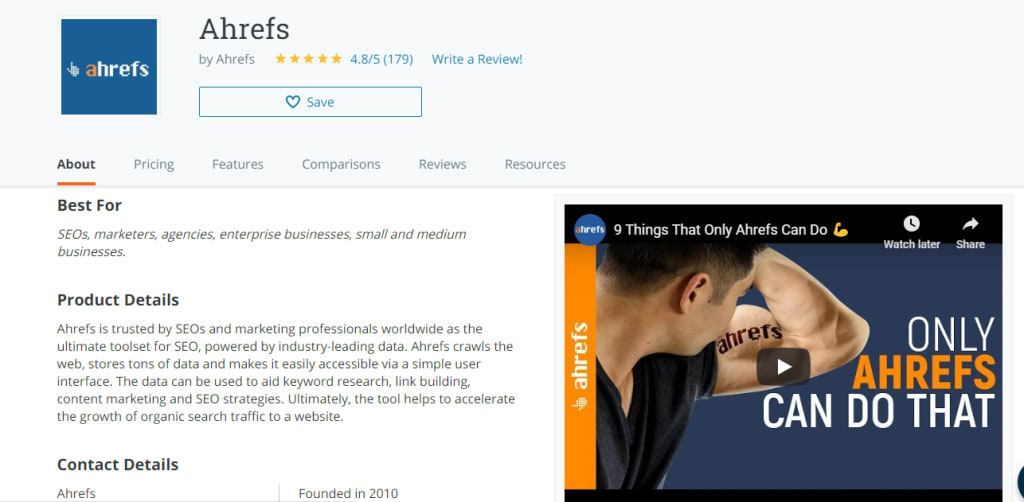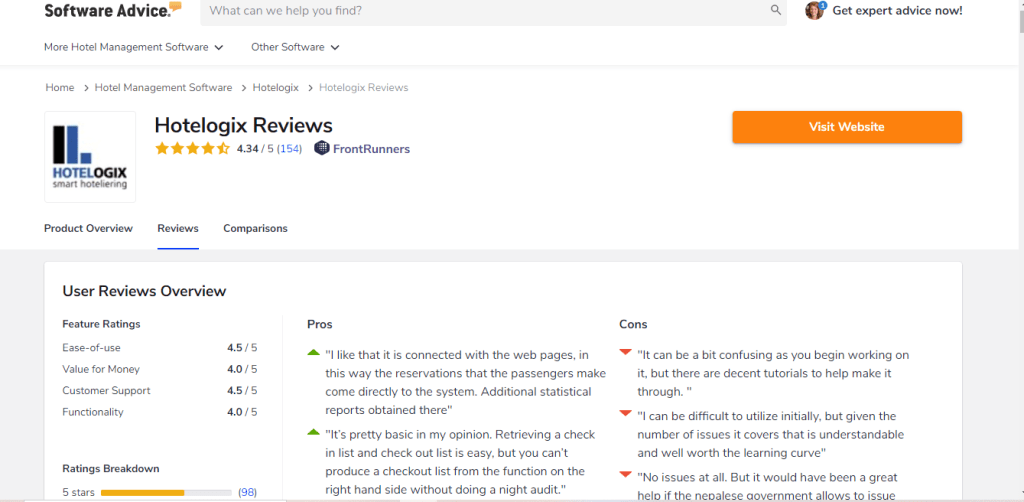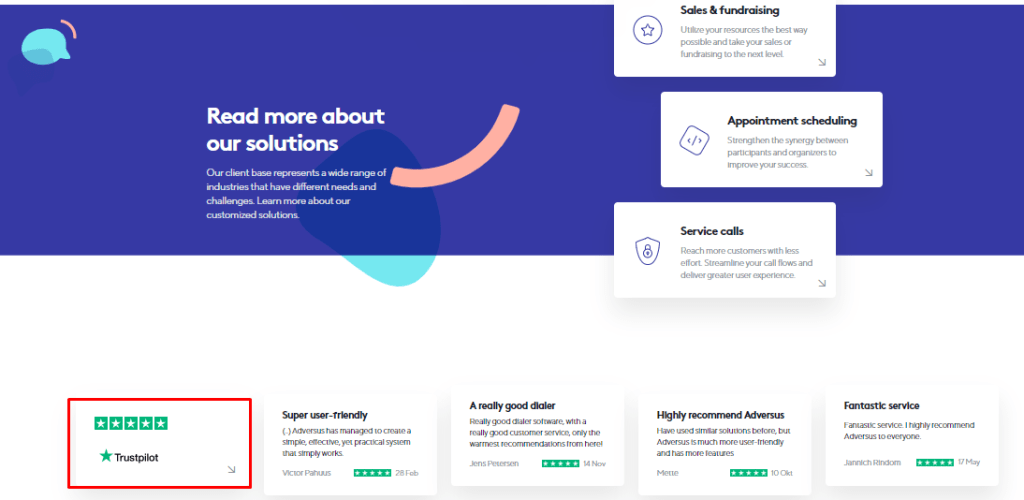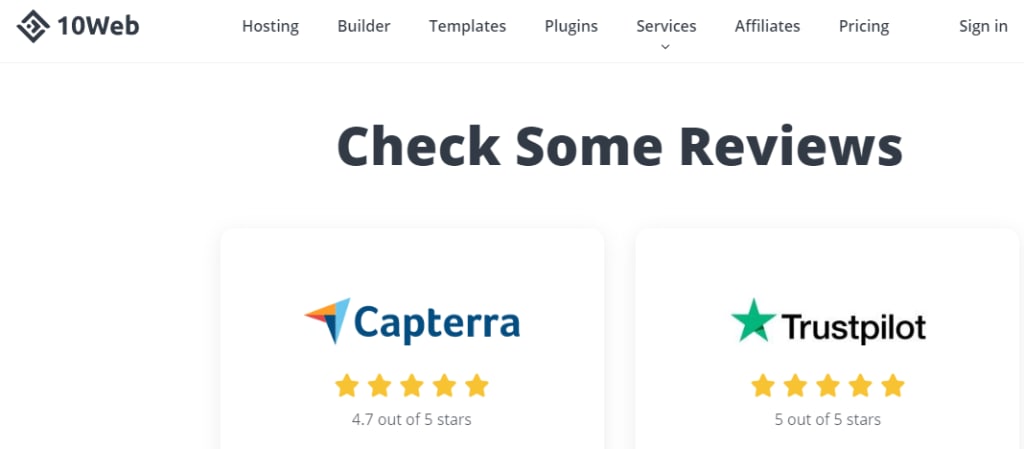How many software review sites are you present at? Do you know what role your SaaS product reviews can play in your business success?
The truth is – product reviews can help you in a number of ways and even be crucial in your sales process. Acknowledging the power of reviews, we’ve prepared this guide so you know:
1) Why software reviews are such valuable business assets,
2) Which are top software review sites you should consider,
3) How to succeed in your review requests and get more of them,
4) Where and how to use reviews to get more customers and higher credibility.
We will also provide you with a bonus checklist and introduce you to 7 SaaS founders & managers who know how to work with reviews. And they are ready to share their best tips for you!
7 things you need to have before becoming Incredo customer
Why software reviews are your best friends and why you need them?
#1 Bad reviews teach, good reviews sell
Not all of your reviews will be positive. Moreover, people are more likely to leave a negative than a positive review. Because if relations go smoothly, your prospect thinks that’s the natural flow. When something goes wrong, it’s time to voice what happens.
Bad reviews point out to your weaknesses, helping you better your customer support, product, onboarding, whatever issue they address. Good reviews help you increase your brand reputation and close more sales.
#2 Let your users write your marketing copy
I am sure that your marketing team members have already researched your niche, have analyzed your competitors and prospects. And you know why people are subscribing to your software.
But everything may change when you start reading authentic and subjective comments by actual customers. You’ll get plenty of insights on what makes your software attractive and what words people use to describe it.
#3 More reviews mean higher rankings on review sites
That’s how “ SEO” works for most of the review sites. If Google ranks based on backlinks, dwell time, etc, software review sites rank based on the number of reviews and ratings.
#4 Get prepared for your future updates and improvements
You should develop your software based not on what you like, but what your users would pay for. And the same principles apply when you are planning new features and/or improving the old ones. Analyze reviews, see which features are the most wanted, add them to your list. Your product team already knows what to work on.
#5 Show that your business exists to serve people and their voice matters
Companies, marketing, and business, in general, are becoming even more humancentric. Every customer matters as competition is high, especially in the SaaS industry. And if you work on personalization, customer engagement, retention, chances are high your business will survive and grow.
#6 Show that your product is worth paying and real people are working with you
Would you trust a software provider that doesn’t have any customers? If you see that no feedback is available on that software, you’d probably think: a) nobody is using it, b) something is wrong with that company and the provider is afraid of allowing reviews, c) maybe it’s even a non-existent business. You don’t want others to think the same way about you, right?
#7 Your future customers need social proof before they reach out to you
Reviews matter for all kinds of buyers, but especially for B2B. Testimonials, case studies, reviews on 3rd party sites, Facebook recommendations – all they are part of your social proof strategy. And having verified reviews from real customers should mean the world to your business.
Top software review sites: Get acquainted with 8 of them
I think that when you say “SaaS review sites”, the first thing that pops up in your head is Capterra (#1).
On this site, users can search by products and categories. It means they can look for reviews about a particular product or search a product from scratch based on its category.
You list all the necessary info so your prospects know about your pricing, training and support options, features in one place. Here’s an example from EagleOwl, restaurant management software.

One great way to stand out is what Ahrefs has done. They’ve inserted a video that is both educational (shows features) and promotional (highlights uniqueness).

Pro tip: You can use PPC ads on Capterra to be visible to more buyers when they look for software like yours. Pay per click starts at $2 and you can contact the site for more precise estimates.
GetAPP (#2) and Software Advice (#3) work with the same system (they belong to the same firm). User reviews look almost the same way and the structure is the same. Let’s see how it looks based on an example from Hotelogix, hotel management software:

As you can see, users rate the software based on ease of use, features, customer support, value for money. Plus they should share thoughts with their own words:
1) “Pros: What did you like most about this software?”,
2) “Cons: What did you like least about this software?”,
3) “Describe your overall experience with [software].”
So your goal is to get 5-star software ratings and give an opportunity to share both the pros and cons of using your product.
Getting listed on another site – Crozdesk (#4) is again free. You can use premium services like PPC or lead generation to promote your software. The majority of visitors are from the US and UK. To optimize your profile, you can include an FAQ section to handle objections.
G2Crowd (#5) does its best to confirm only original reviews from real people. For example, if the user has copied his review from another site or is employed at the same company he is reviewing, that review will be removed.
ProductHunt (#6) is for new products. If your software has recently been launched, you can add it here and see what your first users are saying. Under your product, you’ll find “What do you think of this product?” and users can send their comments.
Trustpilot (#7) is one more of top software review sites with a free plan and transparent policy.
TrustRadius (#8), as opposed to Capterra or Crozdesk, doesn’t allow to place ads on its platform. They verify reviews by a multi-step process to avoid fake comments from unreal “users.”
How to ask customers for reviews? (Step by step guidance with tactics and tips)

If you
just registered on any of these sites, that doesn’t mean you should notify all your customers immediately and ask to write a review.
First, you should understand when it’s the best time to ask for SaaS reviews. One mistake is to send a review request to all of your customers, at the same time.
Not all of your customers may be ready (or willing) to provide a review, moreover a positive one. And even if all of them wrote a comment on the same site at the same time, that would look spammy and unnatural.
Here are 3 cases when asking for a review will not only be relevant but also trigger positive feedback.
1) When users renew their subscription or upgrade their plan
If a customer is willing to use your services in the future, that’s probably because of the value you provide. Renewals and upgrades are a great sign that your customers are satisfied, and would like to thank you with a genuine review.
2) When you’ve served your users for a long time
You have customers that use your service for months or years. And maybe you have positive relations with them, above service provider-user relationship. Since you’ve reached a high level of trust, you can be confident with asking a review and expecting a great opinion.
3) When you effectively solve a user request
No matter how long a customer uses your software, issues can arise at any time. And sometimes you need to go the extra mile and impress your user with high-level support.
I’m not talking about ordinary user requests when they ask a small question and you answer it. I’m talking about the times when your team helps your customer succeed, and does it in a quick, caring way. When the user is pleasantly surprised by your attitude and wants to thank, it’s time to give them the review opportunity.
Now let’s focus on what’s the most relevant channel to ask for a review. Social media, email, phone call?
1) Video/audio calls – Since you and your users are working from different countries and can’t meet in person, video calls replace tête-à-tête meetings. They are the most effective way to ask for anything, including reviews.
Because even your tone of voice can be enough to explain how important that review is. And you can just use the chat within the calling software to drop the link of your review site profile.
2) Email messages – Email messages have their unique advantages. You craft a short, compelling review request, attach the link, and send it to your customer. They have the message in front of them, it won’t get lost or forgotten (if they don’t send it to trash).
3) Social media – Messages via social media can be leveraged if your users don’t actively check their emails or are just more engaged on social media. If you have their social media accounts and won’t intervene in their personal space, feel free to contact them for review requests.
Well, now it’s time to focus on tips that can help you be even more successful in getting reviews.
1) Your review request message should have 1 CTA
Generally speaking, including 1+ CTAs in any of your emails or your web pages is not a good idea. You should always focus on one goal, so your readers don’t get distracted. Make sure you create a message that directs the reader to one destination – your review site profile and doesn’t ask for more actions.
2) Write a subject that discloses your request
A perfect subject line will look like
1. “We’d love to hear from you”,
2. “Help us improve with your review”,
3. “How is your experience with [software name]?”,
4. “Do you have a minute to review us on [website name]?”
Key takeaway: the receiver should understand why he/she opens the message and what to expect from it.
3) Send the message from a real person, preferably high-ranking officials
Human touch is invaluable in all business-related cases. Whether you ask for a review or want the user to register for your webinar. Receiving requests from company owners, account managers or C-level executives means that these people personally want to hear from users. And find time to contact them. That approach can highly increase your chances of getting positive comments.
4) Mention why your user’s review matters at all
Your chances of getting something increase when you mention one simple word – “because…”. It helps the reader understand your motive and gives a reason to act. So give your users at least 1 reason to review. It can be “Because your review will help us make our product better and encourage others to use our services.”
5) Be careful with what you offer in return for a review
“Review our software and you’ll get a 15% discount”. “Write a review and get 1 month for free”. Should you offer similar incentives to your users? Actually, it’s not 100% legit to go for that.
Because it seems like you encourage to write positive things, so you influence their words. Instead, you can just abstain from offering any “gift”. Or at least talk about their reward once the review is already written.
6) Keep your message short and make the process easy
Your message should include three main parts – who’s sending it, why you are asking for a review, what the user should do to fulfill your request. And most importantly, your message should start and end with a simple thank you. Let’s quickly explore an example below:
“Hey, [customer name]. I’m [person’s name], [position] at [company name]. First, let me thank you for being our customer and using our software.
I am reaching out to you with a small request. Would you find 2-3 minutes to review our software on [review website]? That would mean a lot to us as we’ll be able to improve our services and help more customers like you.
Here’s a link to our [website name] profile.
Thank you again for being with us and finding time to write a review.
Regards,
[name], photo”
This message is less than 90 words and doesn’t contain any redundant info. You can do some tweaks based on your customer profile and send a similar message.
Pro tip 1: When your customer says something positive about your software/service, in a written or verbal form, use that moment to turn the good words into a review. Ask immediately whether they’d like to share the same thought on a review platform.
Pro tip 2: If you have customers that are influencers or world-famous companies, treat their reviews with “excessive care”. Because reviews from well-known users influence people’s decisions even more and reinforce the trust in your company.
Where and how to use customer reviews?
#1 Website product page
In the example below, Adversus, a dialer and CRM for telemarketing, showcases their Trustpilot reviews. You can see them both on their Product page and Homepage.

Product or Features pages are maybe the best places to insert links to top soft
ware review sites you’re listed on. Because the visitor is interested in your software and wants to learn more about it. Customer reviews can help reveal the bright sides of your software and show that it’s appreciated by your current users.
#2 Website homepage
See the example below. 10Web, a website building platform, directs homepage visitors to their Capterra and Trustpilot profiles. And also shows how many stars they have earned on average on each site.

NOTE: including links to review sites on your landing page, free trial signup page, pricing page is not desirable.
Because these pages are responsible for conversion. And you’d rather do your best to keep your visitors on your site.
#3 Email campaign – Reviews can be used in your lead nurturing emails as well. Imagine that someone has signed up for your free trial and you want to make them a paying customer. One of your emails can be dedicated to what your users talk about your services on review sites.
#4 Facebook ads – Ads with social proof tend to perform well because of several factors. First, viewers see that real people are using your software. Second, human presence makes your ad more genuine. And third, you show what words people use to describe their interaction with your services.
Schedule a free discovery call to grow your SaaS
Customer reviews for business growth and improvements: 7 SaaS team members take the stages with their experience & tips
#1 Ottomatias Peura
Growth Manager at Speechly, Spoken Language Understanding API

“One great tactic I’ve used successfully for SaaS is to ask for reviews as a part of the customer service process.
So whenever you help your user in a customer support setting, after you solve their issue, ask for a review.
The customer loves you because you just solved their question. And they might even feel like they should pay it back somehow.”
#2 Dylan Max
Head of Growth Marketing at Netomi, AI Customer service and support

“When it comes to reviews:
– Leverage 5-star reviews to grow your business. Put them in a place where they will shine. Publish them on your website, in video testimonials, on social media, ads, wherever you can.
– Leverage 3-star reviews to improve your product or service. 3-star reviewers tend to share a thoughtful mixture of what you did well and where you can improve. Compile all your 3-star reviews and reach out to those people. Listen to what they have to say.
Compared to 1-star reviewers, 3-star reviewers are much easier to convert to 5-star advocates.
– If you want to maximize your positive SaaS reviews, you have to ask. And make it as easy as possible for your users to fill it out.
If a user says something nice about your product, ask them Can I quote you on that? This tactic is especially effective when asked in-person or during a phone/video call.
Then, follow up with an email, write out what they said and ask if they can post it on a review site. Provide the link to the review website to make it as easy as possible for them.”
#3 Allison Hott
Content Marketer at OptinMonster, Lead Generation Software

“At OptinMonster, we regularly post case studies on our blog that show how our customers use our tools to reach their goals.
We reach out to customers by email and ask them if they’re interested in having a case study on our blog. All they have to do is answer questions by email and then we put the case study together.
Case studies are a win-win. The case study subject gets featured on our blog with a link back to the customer’s website. And we can promote our product to our blog readers.”
#4 Carsten Schaefer
CEO & Founder at Crowdy.ai, Social Proof Tools

“When we receive a customer review, this is what we do every time:
1) read the review
2) thank the person, sending the review and address any issues they may have mentioned
3) if a review is negative, we store it in our internal documents for later review
4) if a review is positive, we decide where it’s going to go
5) we post the review on our website with the person’s name (after getting their approval)
6) we post the review on social media (after creating an image with the quote, so we don’t just post text)
7) we select the best reviews and show them on our product pages on the website
8) if we replace a review with a new one, store the old one for later use.”
#5 Jenny Watkins
Marketing Director at TerryBerry, Employee Rewards Program

“Reviews from clients are used in all areas of our company. Here are a few:
- Account Management team is often the first to respond, connecting with the customer to celebrate successes or resolve any issues.
- Product Development team uses feedback to understand what works well and which software updates to prioritize.
- Marketing team uses feedback to tailor communications based on customers’ needs and experiences.
- Employee Engagement team shares customer feedback with internal contributors.
Positive reviews are linked with Terryberry’s internal recognition program where contributors are recognized and rewarded for excellent customer service.”
#6 Sudhir Naidu
CEO at Troop Messenger, Office Chat & Instant Messaging App

“Customer reviews are like double-edged swords. They can make or break your business! One negative review from a dissatisfied customer is more impactful than a handful of positive reviews.
As a SaaS company, we thoroughly understand how s
oftware reviews impact buyers’ purchasing decisions.
To be honest, we always try to post reviews in unedited, genuine form. We spread them across our social media platforms, post on our blogs, product promotions. And we believe that they help gain customers’ loyalty towards our product.”
#7 Frank Spear
Content Marketer at RafflePress, WordPress Giveaway & Contest Plugin
“We use customer reviews to build social proof for our website in two key ways:
First, we feature reviews from high-profile website designers and influencers on our homepage. It lets customers see what other influential people are using our SaaS service.
Additionally, we feature real-time social proof notifications with a tool called TrustPulse. We use its features to show consumers what’s happening with other visitors during their browsing experience on our site.
For instance, a customer might see that someone subscribed to our email list. That encourages him to sign up for our newsletter.
To gather new reviews, we ask our followers on social media and send out emails to current subscribers.
In exchange for taking part in our survey and reviewing our brand, we give them exclusive discounts – regardless of the rating we receive.”
Bonus: Checklist for collecting reviews and managing them

1) Get listed on major software review websites
2) Optimize your profile with features, pricing info
3) Wait for the right time to ask a user for a review
4) Use the sender’s name/photo to be more friendly
5) Keep your request short, engaging, and to the point
6) Give your users at least 1 reason to take an action
7) Don’t forget to thank them for being your customer
8) Make your user’s review writing process easy
9) Use your reviews in your product page, ad copies
10) Use negative reviews to improve your services
How do you use customer reviews in your business?

Tags:
SaaS Growth
November 12, 2020



Comments